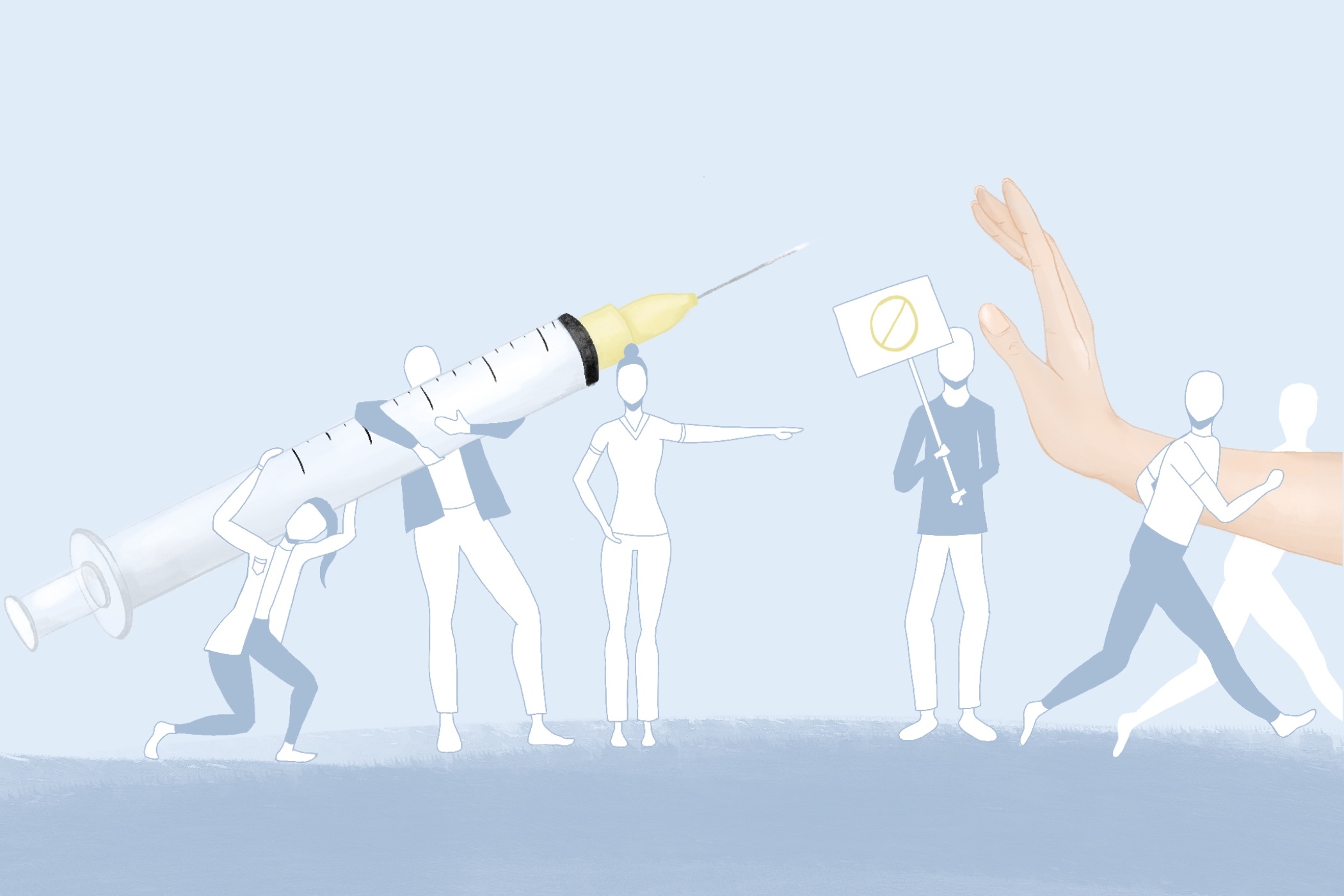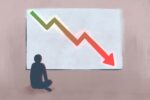As we enter almost nine months in quarantine, and coronavirus cases surge with no tangible plan to alleviate the massive influx of sick people into already overcrowded hospitals, the vaccine is now a holy grail for returning to normalcy. While the public expected the coronavirus vaccine to be ready for distribution by late spring or early summer, updates from companies such as Moderna and Pfizer have announced remarkable news that indicates the possibility of distribution occurring before the end of 2020. Both companies have presented evidence that their vaccines are highly effective, with the former’s efficacy rate being 95% and the latter’s being 90% in clinical trials. Applying for emergency authorization, Moderna and Pfizer have plans to produce 20 to 50 million doses in 2020 alone, with that number skyrocketing into the billions by 2021.
In spite of the fact that the vaccine may be the only path the public has to regaining the world prior to March 2020, 40% of Americans are still unwilling to take the vaccine. As conspiracy theories and misinformation spread faster than wildfire, it is important to address falsehoods and push for a greater trust in science rather than social media posts.
How Can the COVID Vaccine Be Produced So Fast?
Most of the hesitation surrounding the vaccine stems from the belief that a vaccine cannot be developed so quickly considering the history of developing vaccines for major diseases. James Salk worked from 1947 to 1949 to develop the first inactivated polio vaccine and it was only approved for use in 1955. Twenty years passed from the first diagnosis of primary varicella infection, colloquially known as chickenpox, before scientists could develop an effective vaccine.
From the outbreak of the Spanish flu in 1918, it took the science community 27 years to develop and license an influenza vaccine approved for civilians. Two years later, scientists realized that the composition of the virus changes seasonally, which rendered the initial vaccinations ineffective; even with advanced technology and a greater knowledge of the development of vaccines, scientists must make alterations to the vaccine every year before flu season in the winter months.
Other diseases that arose in recent decades, such as Zika and SARS, still have no working vaccines. Both of these epidemics ended before the vaccine development was completed, so federal money was reallocated. While a vaccine for the 2013 to 2016 Ebola outbreak was created by 2019, the epidemic had also already ended by the vaccine’s development, so there are limited prospects for its wide distribution. And even with the intense — and rather racist — hysteria that accompanied Ebola, it took three years for a vaccine to be approved.
So how can the COVID-19 vaccine be produced so fast and still be considered safe?
To answer that one must examine the stages of vaccine development.
- Exploratory Stage: This stage generally takes from two to five years and includes lab-based research to try to decipher an immune response at a molecular level.
- Pre-clinical Stage: Generally lasting two years, animals are tested upon to ensure that any vaccine is safe for humans.
- Clinical Development: This stage is actually a three-stage process. Phase I begins with small groups of (random) people receiving the trial vaccine. In Phase II, the clinical study expands, and the vaccine is given to the demographic that it is intended for. Phase III further expands the study, and the vaccine is given to thousands of people and tested for efficacy and safety.
- Regulatory Review and Approval: All of the vaccine’s development data is submitted to regulators such as the Food and Drug Administration to gain approval. This stage also takes two years.
- Manufacturing/Quality Control/Delivery: In this stage, the vaccine is manufactured, reviewed for quality control, and is distributed among the masses.
If all vaccines followed this exact model, it would take almost 10 years to develop. Personally, another 10 years in quasi-quarantine with the fear of travel, the fear of spending time with groups of more than five people and the constant use of masks does not sound very appealing.
Enter Operation Warp Speed
The goal of Operation Warp Speed is to produce and deliver 300 million doses of safe and effective vaccines — with initial doses available by January 2021 — as part of a broader strategy to accelerate the manufacturing and distribution of COVID-19 vaccines.
In order to accelerate the development of vaccines, rather than eliminate essential steps, phases will occur simultaneously. Step five, the manufacturing of the vaccine, is occurring concurrently with the clinical trials. Generally, this is considered a financial risk for investors, as the vaccine could prove to be ineffective. This is why vaccines often take many years to be fully distributed. Investors do not want to invest money into dead ends and force themselves into financial ruin.
Therefore, concurrent steps do not lessen the efficacy of the vaccine, but rather just increase the financial risk. The federal government is also making investments in certain vaccines at its own risk, allowing firms to confidently invest in development and faster distribution.
The Pfizer and the Moderna vaccines are also special cases in vaccine history. If these are cleared, they will be the first vaccines using messenger RNA technology to ever be approved for human use by the Food and Drug Administration. Development for these vaccines was faster than others, as scientists had been able to start their work before there was even a case of COVID-19 in the country. Making messenger RNA also does not require much time.
Everyone has a choice on whether or not to take the vaccine. However, it is important to note that even a small number of unvaccinated people can make it much easier for a disease to spread and survive. The idea of herd immunity has been used recklessly by politicians who prioritize the state of the economy over the safety of the people. Politicians argue that if the entire country eases restrictions, some healthy people will be able to develop an immunity to the virus. Herd immunity in this context happens when enough of a population has developed immunity that a disease’s spread becomes improbable.
However, achieving that would also mean the deaths of thousands upon thousands of people, which could include your mom, dad, grandparents and other elderly people you hold dear. COVID-19 has especially been devasting to the elderly community, with eight out of 10 COVID-19 related deaths being among adults aged 65 and older. Even young people have faced irreparable damage from the virus, like asthma and loss of taste and smell.
I reiterate that everyone has free will on whether or not to take this vaccine, but after understanding how it was developed so quickly, and knowing that taking it could not only protect you but other vulnerable members of our society who cannot physically afford to treat COVID-19 as a cold, I hope you choose wisely.

















